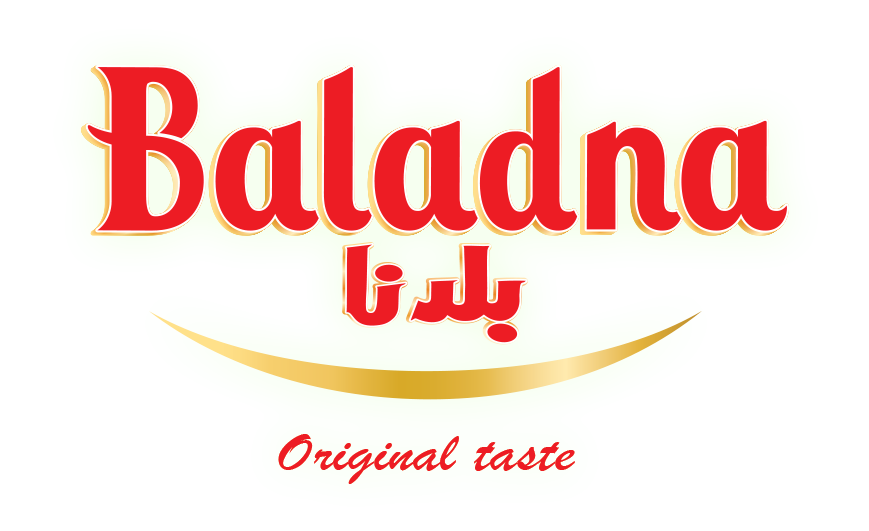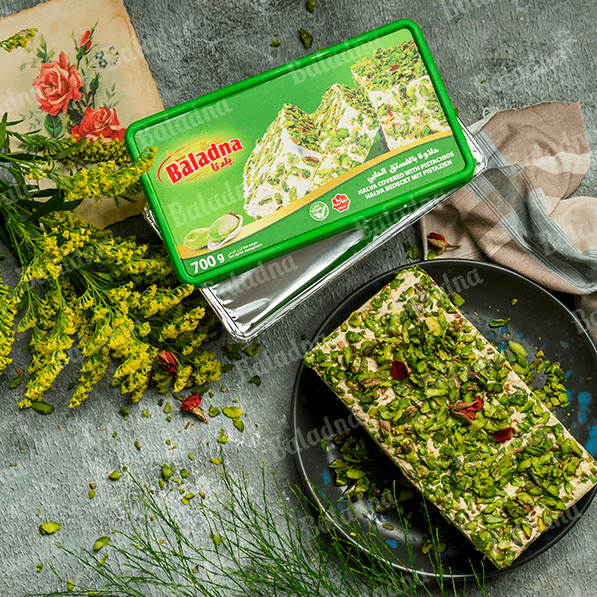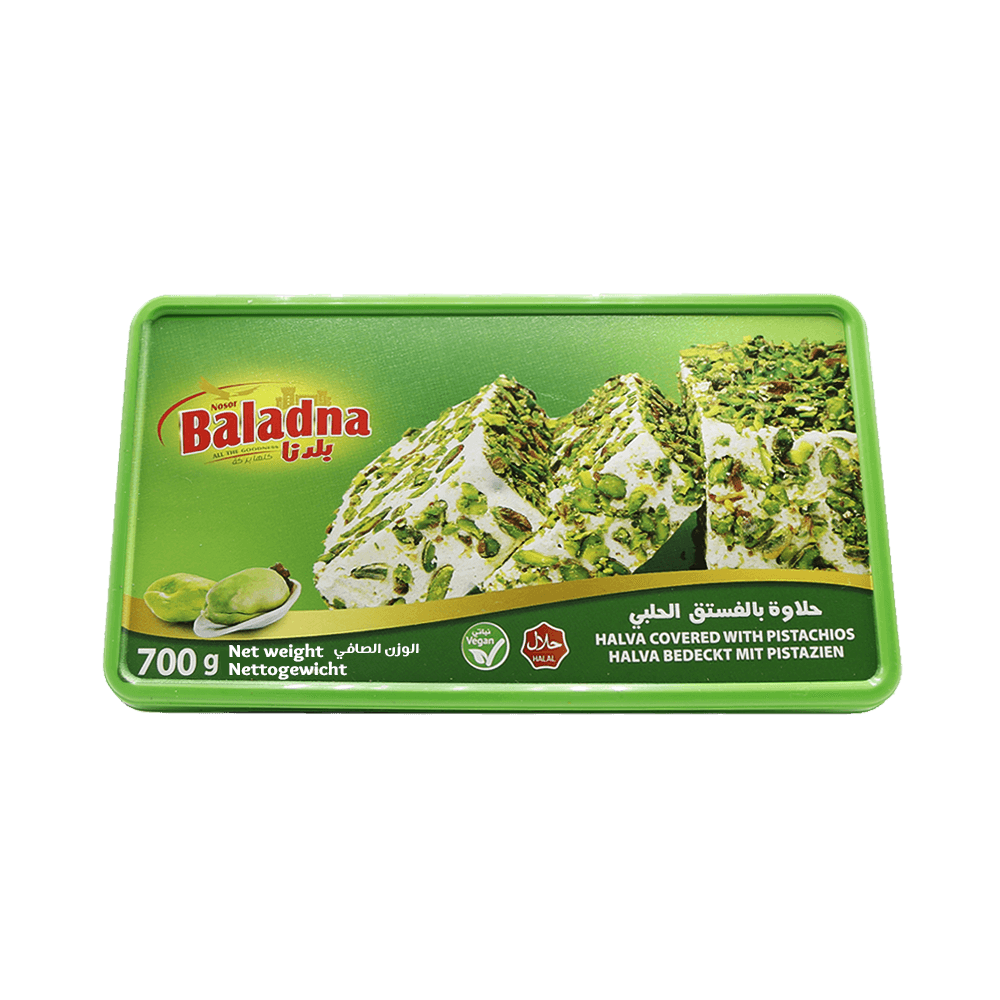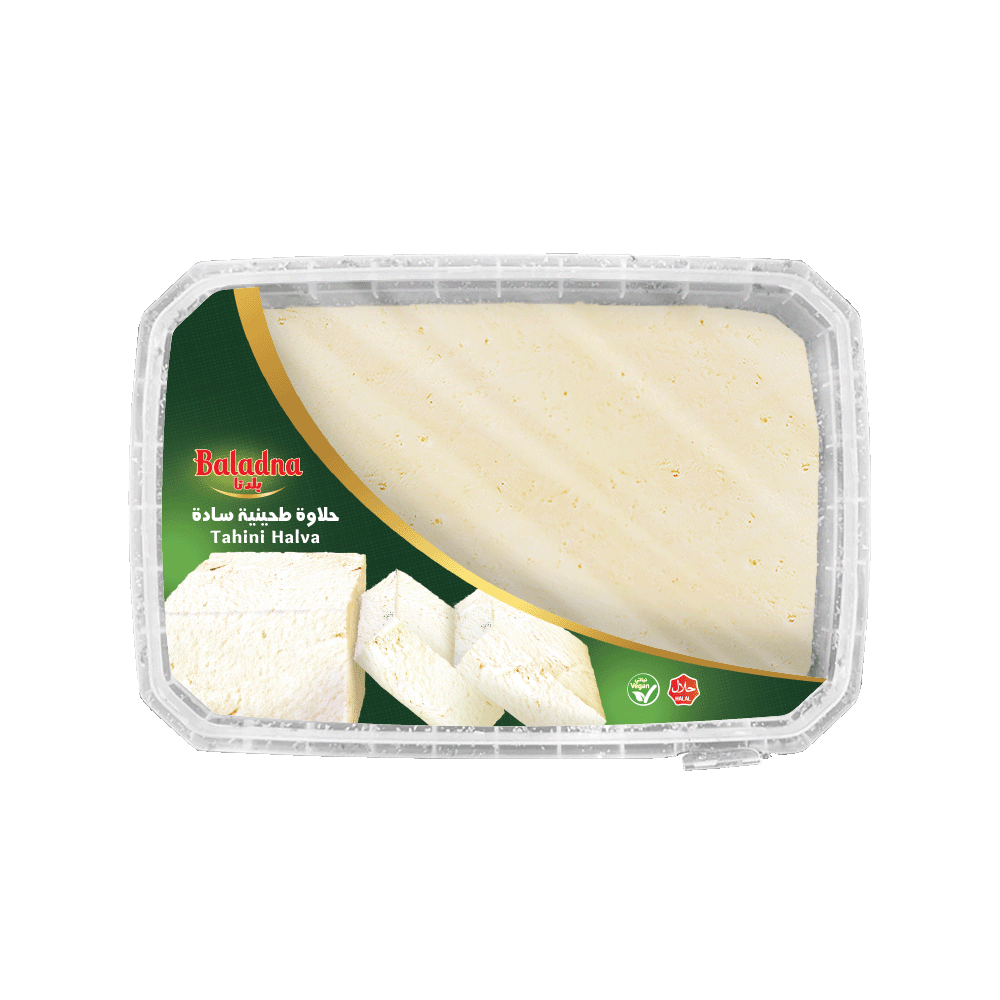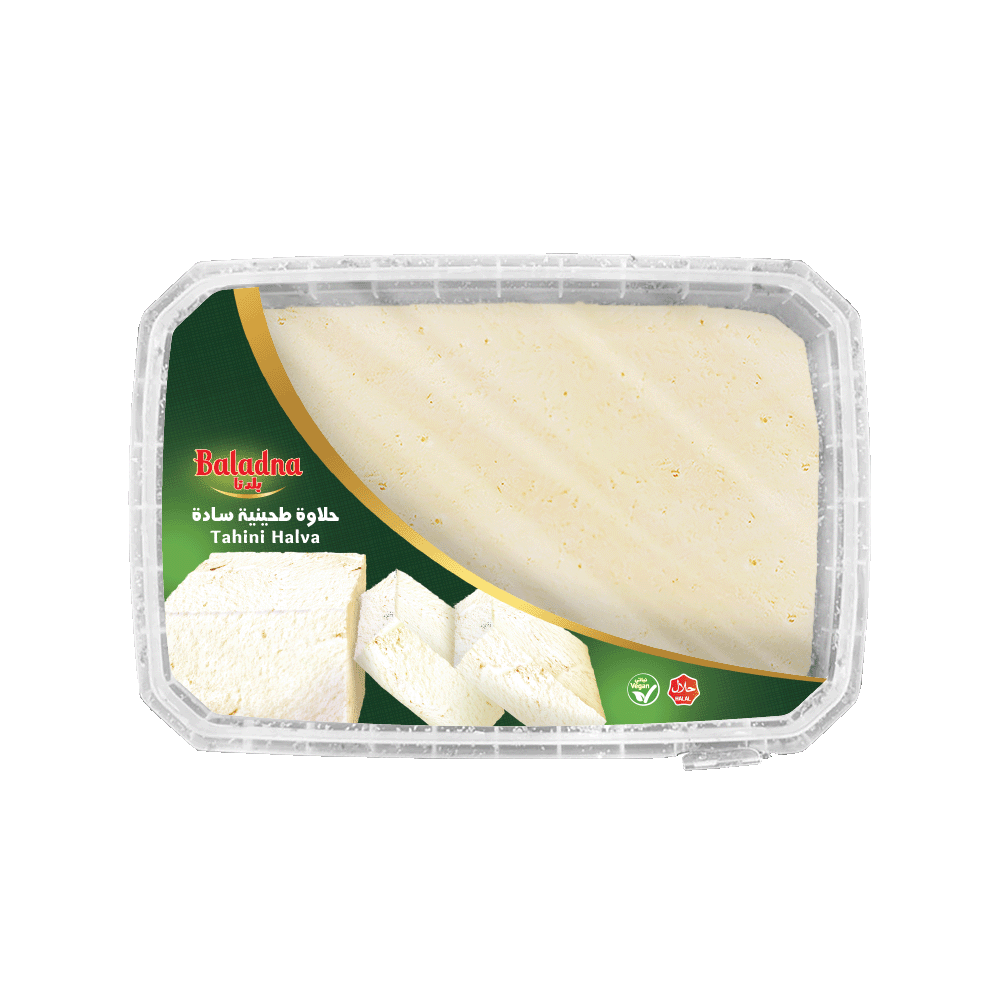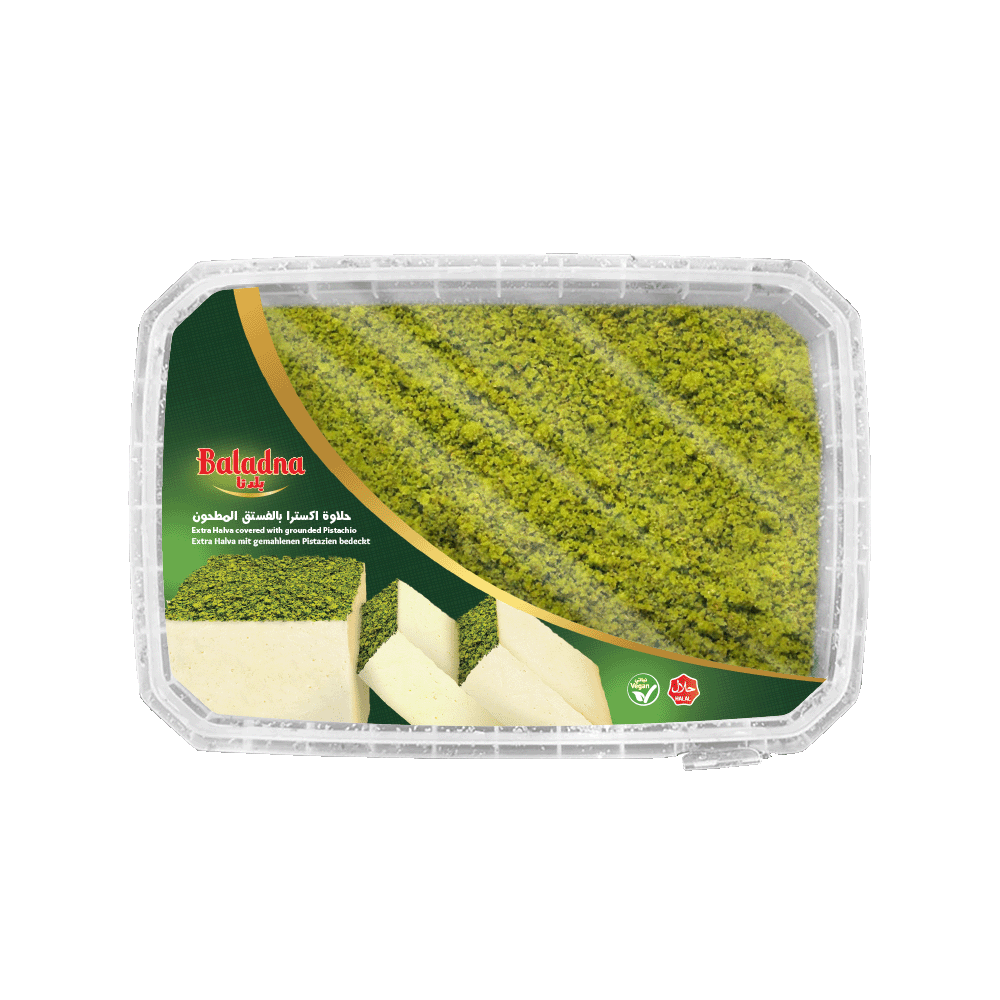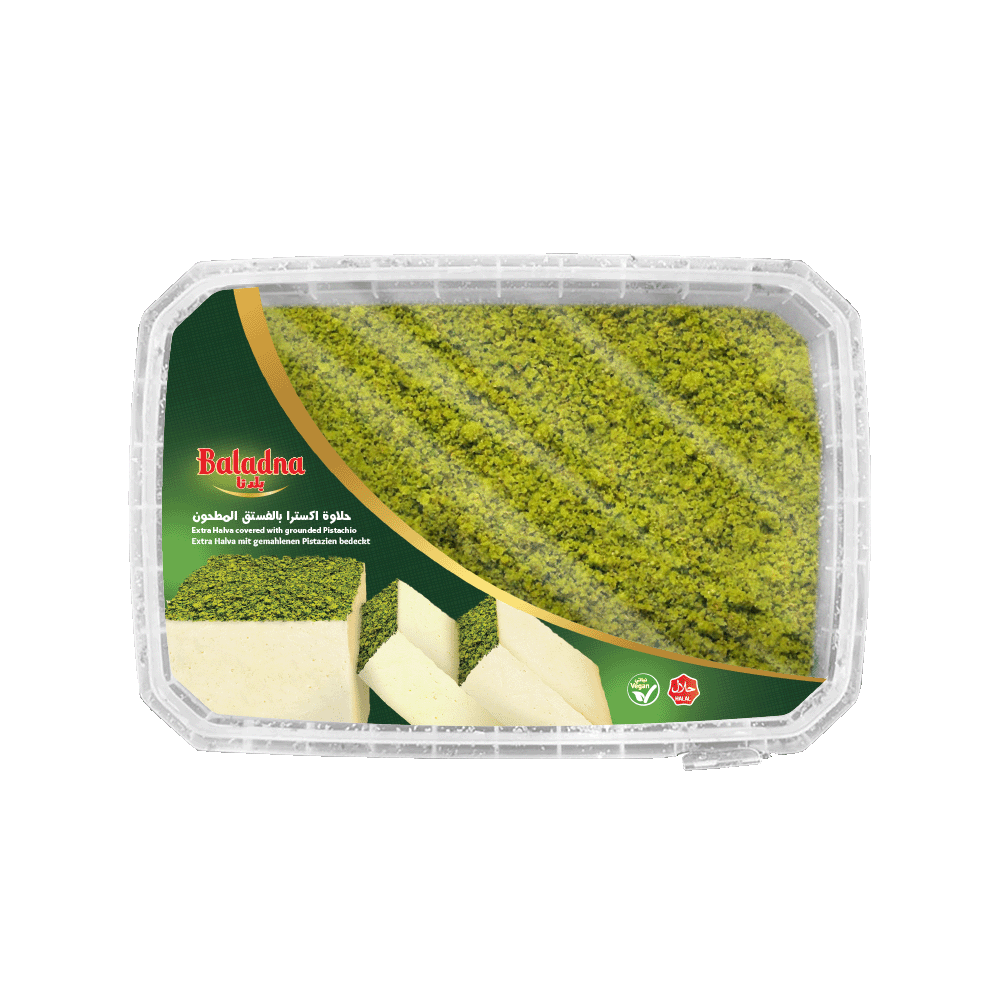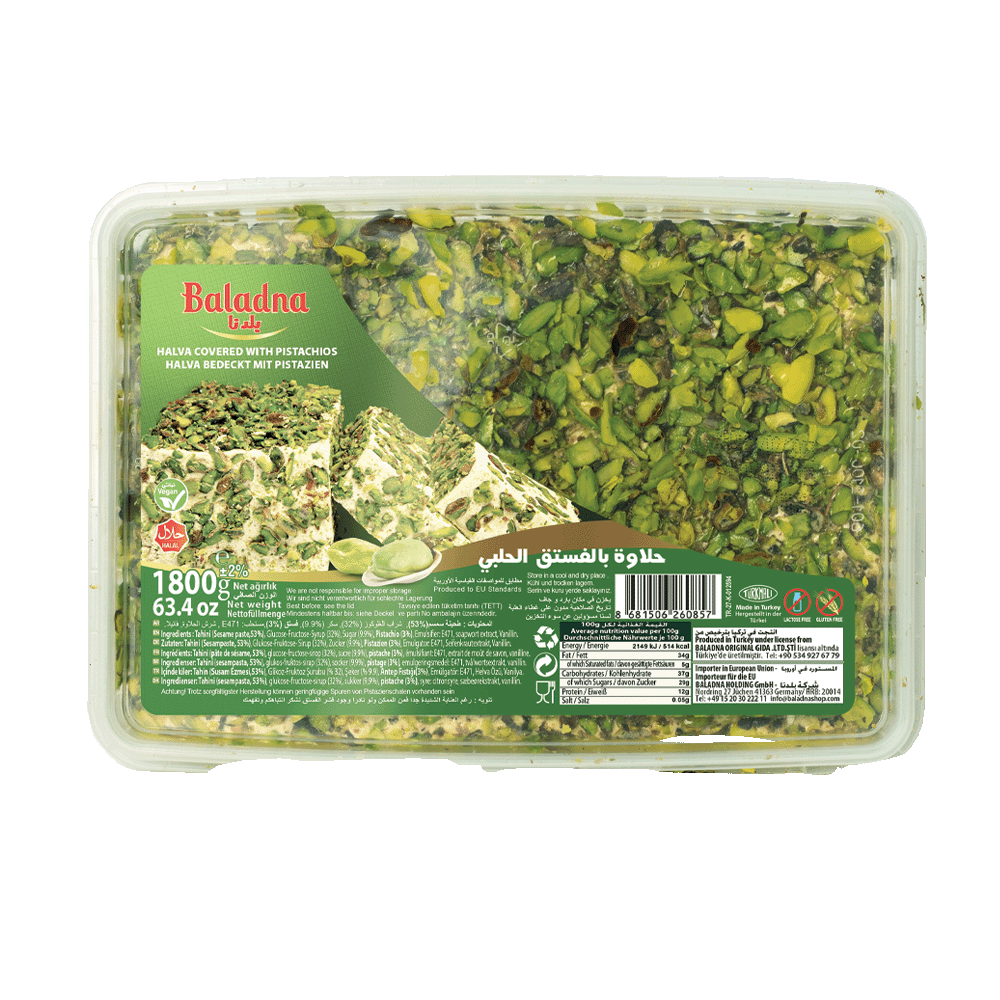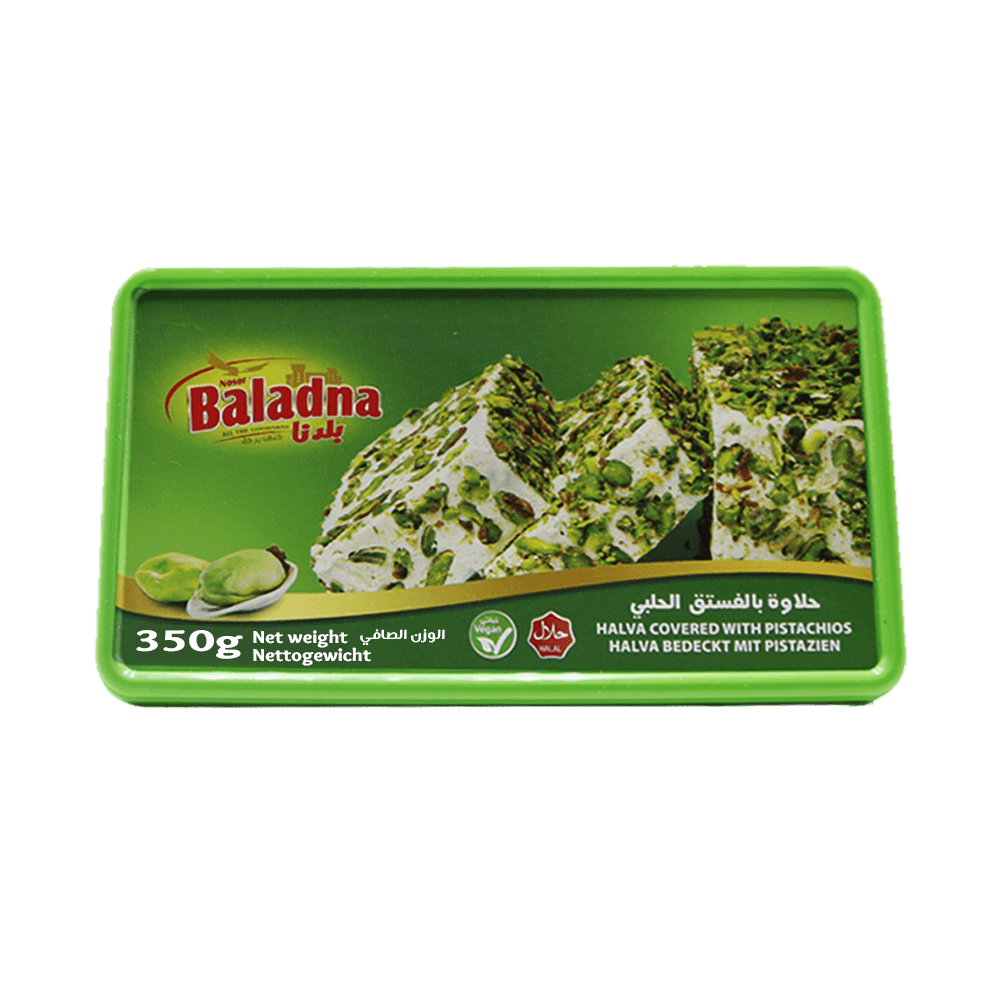Tahini Halva
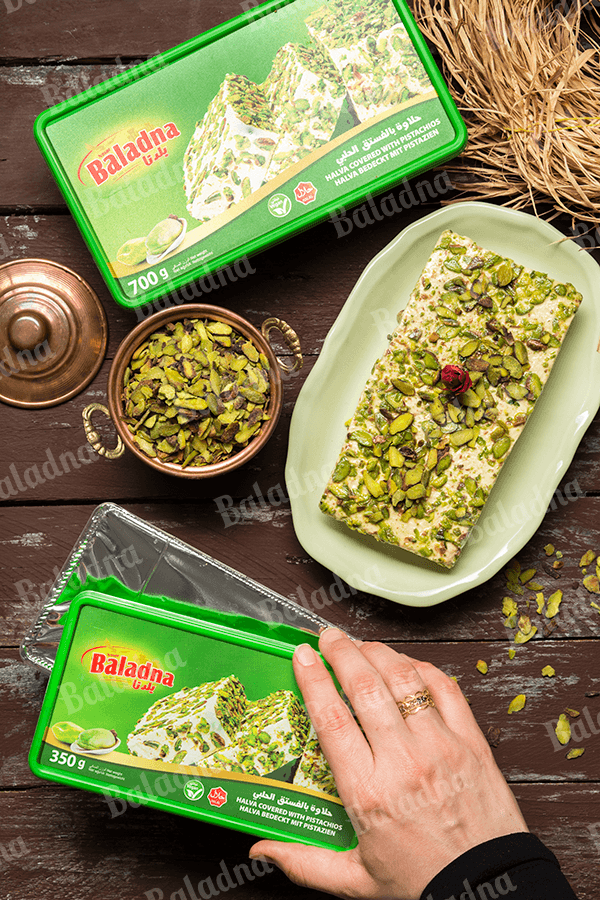
A traditional food rich in nutritional value
Halva is a traditional food common in the Middle East and North Africa, primarily made from tahini (sesame paste) and sugar. To improve texture and enhance flavor, plant roots like soapwort are often added. It may also be enriched with nuts like pistachios or almonds, or flavored with cocoa or vanilla, making it a nutritionally rich and flavor-diverse product.
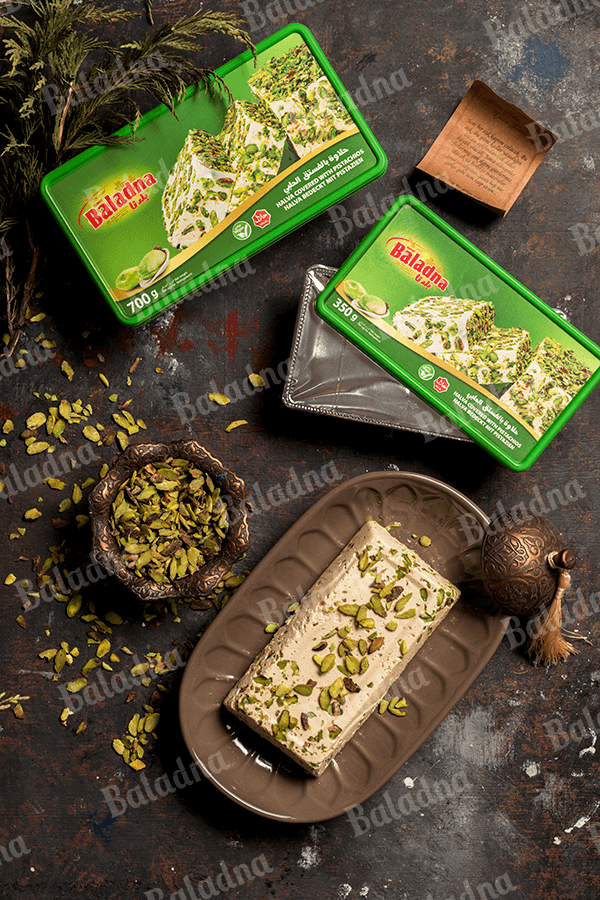
Nutritional Value
Halva is a rich source of energy and nutrients, with approximately 514 calories per 100 grams, 12 grams of protein, 34 grams of fat (5 grams of which are saturated), 37 grams of carbohydrates, and 29 grams of sugar, along with a low salt content (0.05 grams). It also provides essential vitamins and minerals that support bone health, immunity, and vital functions. “Baladna Halva” is a balanced example of this product category, combining traditional taste with nutritional value, and excelling in aspects such as high protein content and moderate sugar levels, making it a smart choice for those seeking high-quality food without excessive sweetness or saturated fats.
Quality Standards of Halva
High-quality halva is characterized by specific sensory criteria such as uniform color, light non-greasy texture, and a natural bitterness-free taste. Chemical quality indicators include a high sesame oil content (25–30%) and the absence of hydrogenated oils and bleaching agents. Additionally, it must be produced in a hygienic environment free of contamination and packaged in secure wrapping with a clear label. All of these elements reflect a product of high nutritional value and reliable manufacturing standards.
Serving and Presentation Varieties
Halva can be served in many ways to suit various tastes and occasions, making it a flexible option for daily meals or hospitality. It can be eaten directly as a snack with traditional or whole-wheat bread, and is often served at breakfast or dinner with tea or milk. It’s also used in school lunch sandwiches for children or cut into cubes as a dessert at family events. In some recipes, it’s mixed with cream or nuts or used as a filling in pastries and Middle Eastern sweets. It can be served chilled for a firmer texture or at room temperature for easier slicing. This diversity in serving methods enhances its appeal and makes it suitable for different tastes and diets.
Baladna Halva: Manufacturing Quality and Ingredients
“Baladna Halva” exemplifies a traditional product made to modern standards, emphasizing high-quality ingredients and balanced nutritional values. Its composition, based on pure tahini made from traditionally stone-ground Sudanese Gedaref sesame (the finest variety), and its measured ratios of protein, fat, and sugars, reflect a clear commitment to offering a product that satisfies consumer demands for taste and health value. This is halva crafted with care and offered with confidence.
